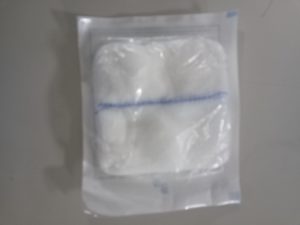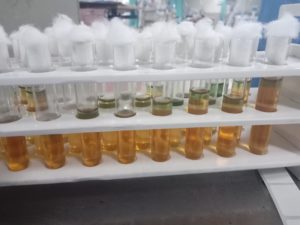PHYSICAL METHODS OF STERILIZATION
Daylight
The microbicide action of daylight is for the most part because of the nearness of ultraviolet beams in it. It is in charge of unconstrained cleansing in normal conditions. In tropical nations, the daylight is progressively viable in eliminating germs
Because of the blend of bright beams and warmth
By eliminating microorganisms suspended in water, daylight gives a regular technique for the purification of water bodies, for example, tanks and lakes. Daylight isn’t sporicidal, henceforth it doesn’t sanitize. Warmth: Heat viewed as the most dependable technique for the cleansing of articles that can withstand heat.
Warmth acts by oxidative impacts just as denaturation and coagulation of proteins. Articles that can’t withstand high temperatures can, in any case, clean at a lower temperature.
Variables influencing sanitization by warmth are:
Nature of warmth: Moist warmth is more successful than dry warmth Temperature and time: temperature and time are contrarily relative. As temperature builds the time taken for the procedure diminishes.
The number of microorganisms
More the number of microorganisms, higher the temperature or longer the term required. Nature of microorganism: Depends on species and strain of microorganism, affect the ability to warmth may differ. Spores are very impervious to warm.
 Kind of material: Articles that vigorously sullied require a higher temperature or delayed presentation. Certain warmth touchy articles sanitized at the lower temperature. The nearness of natural material: Organic materials, for example, protein, sugars, oils, and fats increment the time required.
Kind of material: Articles that vigorously sullied require a higher temperature or delayed presentation. Certain warmth touchy articles sanitized at the lower temperature. The nearness of natural material: Organic materials, for example, protein, sugars, oils, and fats increment the time required.
The activity of warmth: Dry warmth acts by protein denaturation, oxidative harm and poisonous impacts of raised dimensions of electrolytes. The damp warmth acts by coagulation and denaturation of proteins. Sodden warmth is better than dry warmth in real life.
The temperature required to murder organism by dry warmth is more than the sudden warmth. Warm demise time the basic time required to kill a suspension of life forms at a foreordained temperature in a predefined situation.
Dry heat sterilization
Red warmth: Articles, for example, bacteriological circles, straight wires, tips of forceps and burning spatulas cleaned by holding them in Bunsen fire till they end up intensely hot.
A straightforward strategy for powerful disinfection of such articles, constrained to those articles that can be warmed to redness in the fire. Blazing: The technique for disregarding the article a Bunsen fire, however not warming it to redness. Articles, for example, surgical tools, the mouth of test tubes, cups, glass slides, and spread slips are gone through the fire a couple of times.
Despite the fact that most vegetative cells are slaughtered, there is no certification that spores also beyond words such a short introduction. This technique also is constrained to those articles that can be presented to fire. Splitting of the dish sets may happen.
Cremation
This is a technique for annihilating debased material by consuming them in the incinerator. Articles, for example, dirtied dressings; creature remains, neurotic material and bedding and so forth ought to exposed to cremation. This strategy results in the loss of the article subsequently reasonable justification for those articles arranged. Consuming of polystyrene materials discharges thick smoke, and henceforth they ought not to burn.
Tourist oven: This strategy presented by Louis Pasteur. Articles sanitized and presented to high temperature (160° C) for the length of one hour in an electrically warmed broiler. Since air a poor conductor of warmth, even conveyance of warmth all through the chamber accomplished by a fan.
The warmth exchanged to the article by radiation, conduction, and convection. The stove fitted with an indoor regulator control, temperature pointer, coincided retires and should have satisfactory protection.
Articles disinfected: Metallic instruments (like forceps, surgical blades, scissors), crystal’s, (for example, Petri-dishes, pipettes, cups, all-glass syringes), swabs, oils, oil, oil jam, and some pharmaceutical items.
